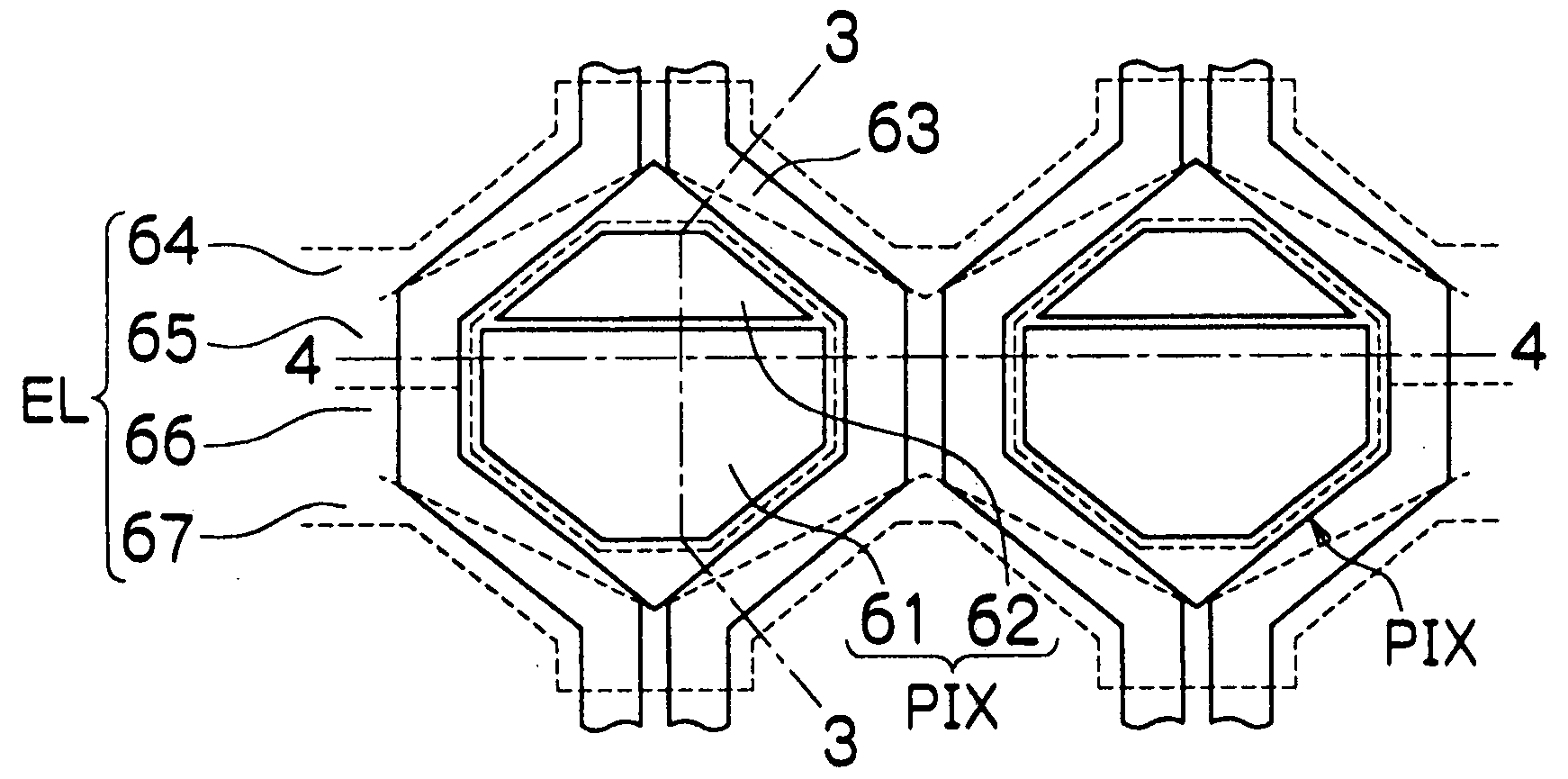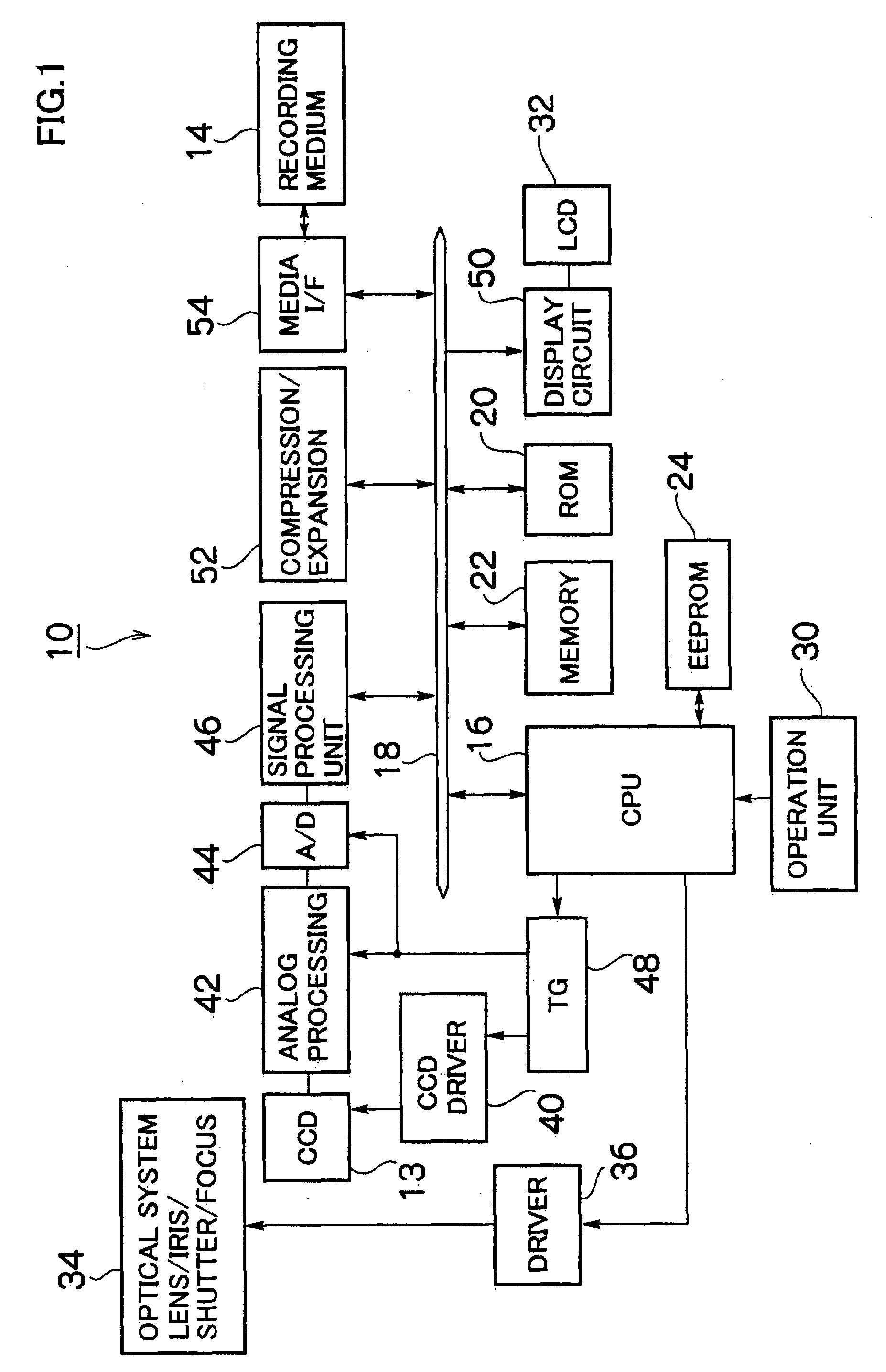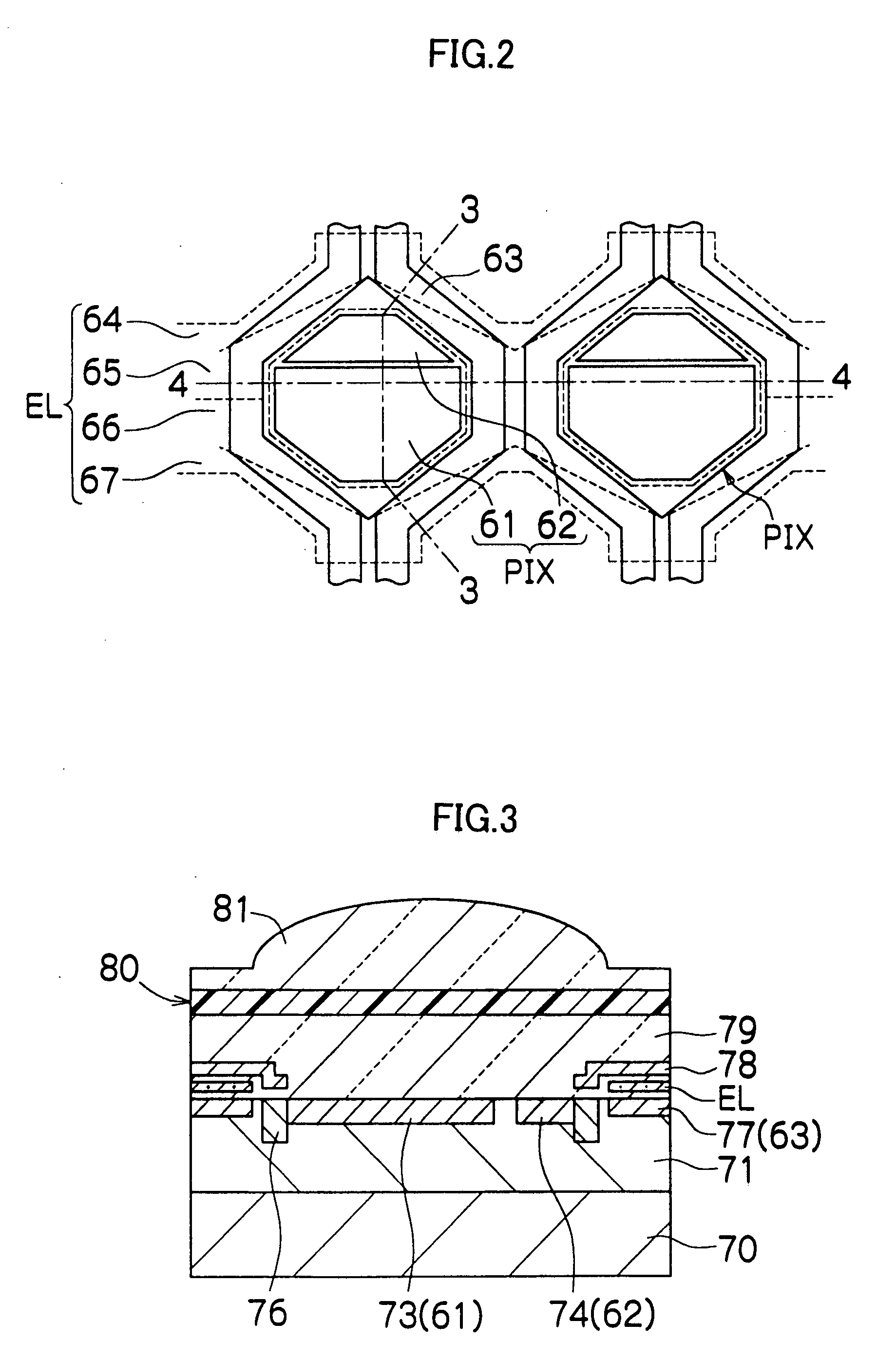Method and imaging apparatus for correcting defective pixel of solid-state image sensor, and method for creating pixel information
a solid-state image sensor and pixel information technology, applied in the direction of radiation control devices, color signal processing circuits, packaging foodstuffs, etc., can solve the problem of defective pixel not being able to capture a pixel value on a local basis, image captured through correct exposure may seem somewhat unsatisfactory compared to a silver halide photograph, and significant image quality degradation
- Summary
- Abstract
- Description
- Claims
- Application Information
AI Technical Summary
Benefits of technology
Problems solved by technology
Method used
Image
Examples
Embodiment Construction
[0053]The preferred embodiment of the present invention will be described in detail according to the attached drawings.
[0054]FIG. 1 is a block diagram showing the configuration of an electronic camera according to an embodiment of the present invention. The camera 10 is a digital camera converting into digital image data an optical image of a subject captured through a CCD solid-state image sensor (hereinafter referred to as CCD) 13, and a method for correcting a defective image according to an embodiment of the present invention is applied to part of a signal processing device which processes an image signal obtained from the CCD 13.
[0055]The overall operation of the camera 10 is generally controlled by a central processing unit (CPU) 16 built in the camera 10. The CPU 16 functions as a control device which controls a main camera system according to predetermined programs, and functions as a computation device which performs a various kinds of computations such as automatic exposur...
PUM
 Login to View More
Login to View More Abstract
Description
Claims
Application Information
 Login to View More
Login to View More - R&D
- Intellectual Property
- Life Sciences
- Materials
- Tech Scout
- Unparalleled Data Quality
- Higher Quality Content
- 60% Fewer Hallucinations
Browse by: Latest US Patents, China's latest patents, Technical Efficacy Thesaurus, Application Domain, Technology Topic, Popular Technical Reports.
© 2025 PatSnap. All rights reserved.Legal|Privacy policy|Modern Slavery Act Transparency Statement|Sitemap|About US| Contact US: help@patsnap.com



